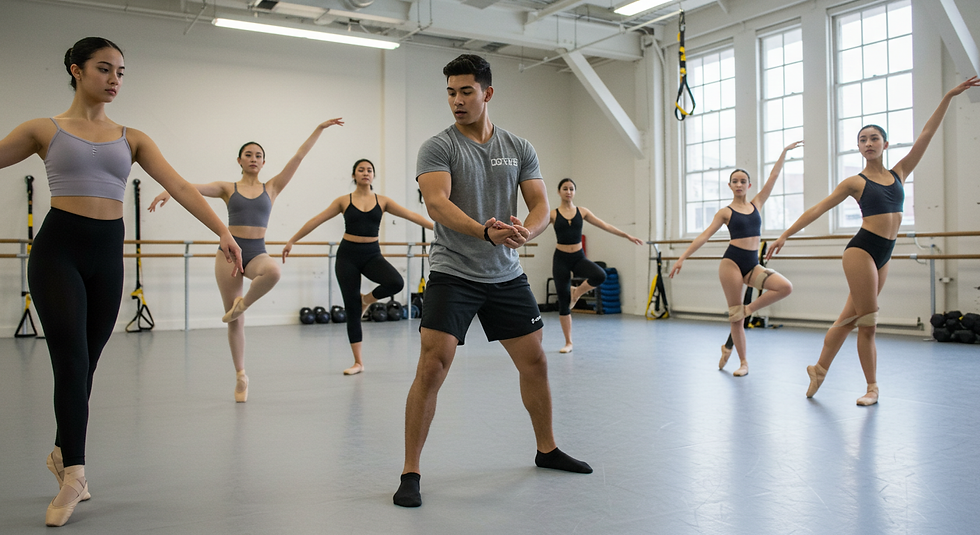Strength and Conditioning Programmes Specific for Professional Ballet Dancers: A Science-Based Approach
- Dr Luigi Vorluni
- Mar 4, 2024
- 4 min read
Updated: May 28

Introduction
Professional ballet dancers represent a unique athletic population whose performance demands a combination of artistry, flexibility, endurance, and explosive power. Unlike traditional athletes, ballet dancers must execute highly technical movements with precision and grace, often under extreme physical stress. Consequently, strength and conditioning (S&C) programmes tailored specifically to their physiological and biomechanical demands are essential. This article explores the scientific principles behind effective S&C protocols designed to enhance performance, reduce injury risk, and prolong the careers of professional ballet dancers.
The Physical Demands of Ballet Dancing
Ballet dancers require a blend of muscular strength, muscular endurance, cardiovascular fitness, flexibility, balance, and proprioception. Key physical attributes include:
Lower limb strength and power: for jumps (e.g., grand jeté) and rapid directional changes.
Core stability: essential for balance and control during turns and extensions.
Muscle endurance: to maintain performance quality throughout rehearsals and shows.
Flexibility and joint range of motion: to achieve aesthetic lines and positions.
Neuromuscular control: to coordinate complex, high-precision movements.
However, ballet training alone often lacks comprehensive strength and conditioning components, leading to deficits in muscular strength and power which are critical for injury prevention and enhanced performance.
Scientific Rationale for Strength and Conditioning in Ballet
Injury Prevention
Injury prevalence in professional ballet is high, especially overuse injuries affecting the lower limbs and spine. Weakness or muscle imbalances increase injury risk by compromising joint stability. Strengthening muscles around the hip, knee, and ankle helps maintain proper alignment and absorb forces during landing and takeoff.
Performance Enhancement
Studies have shown that greater lower body strength correlates with improved jump height and better balance. Additionally, improved core strength enhances postural control necessary for sustained poses and turns.
Muscle Imbalances and Functional Deficits
Ballet dancers often develop muscle imbalances due to repetitive movements emphasizing certain muscle groups (e.g., hip external rotators and plantar flexors) while underutilizing others (e.g., hip abductors). Targeted conditioning helps address these imbalances.

Components of an Effective Ballet-Specific Strength and Conditioning Programme
1. Assessment and Individualization
Before designing a programme, baseline assessments of strength, flexibility, balance, and functional movement patterns are crucial. Tools include isokinetic dynamometry, balance tests, and video gait/technique analysis.
2. Strength Training
Lower body: Emphasis on hip extensors, abductors, external rotators, quadriceps, hamstrings, and calf muscles.
Core musculature: Deep stabilizers (transversus abdominis, multifidus) and superficial muscles (rectus abdominis, obliques).
Upper body: For port de bras and partner lifts, strengthening shoulder stabilizers and scapular muscles is beneficial.
Training Methods: Use progressive resistance training, incorporating both concentric and eccentric contractions. Eccentric training is particularly effective in enhancing tendon resilience and controlling landings.
3. Power Development
Plyometric exercises such as jump squats and bounding drills develop explosive strength essential for grand jetés and multiple turns. These should be carefully integrated to avoid overload.
4. Flexibility and Mobility
Static and dynamic stretching combined with joint mobilizations maintain the aesthetic demands of ballet without compromising joint stability. Evidence supports dynamic stretching as more effective in preparing muscles for performance.
5. Balance and Proprioception
Balance training using unstable surfaces and single-leg exercises improves neuromuscular control. This is vital for pointe work and maintaining posture during complex choreography.
6. Endurance Training
Cardiovascular conditioning through low-impact activities (e.g., cycling, swimming) enhances stamina without exacerbating joint loading.
Monitoring and Progression
Tracking progress with periodic re-assessment ensures adaptations are occurring, and training loads remain optimal. Monitoring fatigue and signs of overtraining is essential given the demanding schedules of professional dancers.
Challenges and Considerations
Training Load Management: Balancing S&C work with dance rehearsals to avoid overtraining.
Psychological Factors: Dancers may fear that increased muscle mass could hinder aesthetics; education on functional strength benefits is important.
Access to Expertise: Collaboration between dance instructors, physiotherapists, and strength coaches enhances programme effectiveness.
Conclusion
Strength and conditioning programmes tailored specifically to the unique demands of professional ballet dancers are fundamental to optimizing performance and minimizing injury risk. Grounded in scientific principles, these programmes address muscle imbalances, enhance power and endurance, improve neuromuscular control, and preserve the flexibility and grace intrinsic to ballet. As the science continues to evolve, integration of individualized, evidence-based conditioning will become the standard in professional ballet training.
References
Allen, N., Nevill, A., Brooks, J., Koutedakis, Y., & Wyon, M. (2012). Ballet Injuries: Injury incidence and severity over 1 year. Journal of Orthopaedic & Sports Physical Therapy, 42(9), 781-790.
Behm, D. G., & Chaouachi, A. (2011). A review of the acute effects of static and dynamic stretching on performance. European Journal of Applied Physiology, 111(11), 2633–2651.
Koutedakis, Y., & Jamurtas, A. (2004). The dancer as a performing athlete: physiological considerations. Sports Medicine, 34(10), 651–661.
Koutedakis, Y., Sharp, N. C. C., & Nevill, A. (2007). Assessment of physical fitness components and risk factors for injuries in dancers: a review. Sports Medicine, 37(4-5), 311-325.
Kraemer, W. J., & Ratamess, N. A. (2004). Fundamentals of resistance training: progression and exercise prescription. Medicine and Science in Sports and Exercise, 36(4), 674-688.
Pickard, H., Baig, S., & Wyon, M. (2016). Ballet-specific muscular imbalances and injury risk. Physical Therapy in Sport, 20, 37-43.
Smith, T., Wyon, M., & Koutedakis, Y. (2015). Core strength and balance training in professional ballet dancers. Journal of Dance Medicine & Science, 19(3), 99-106.
Wyon, M. A., Guinan, D., & Hawkey, A. (2011). Lower body strength and power characteristics of elite and sub-elite female ballet dancers. Journal of Strength and Conditioning Research, 25(7), 1749–1755.
To get Performance & Health Products & Services go to: https://synergyvita.com

Comments